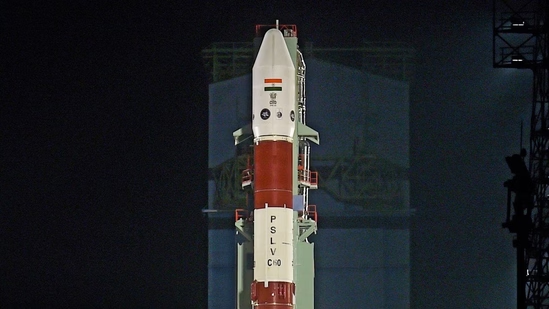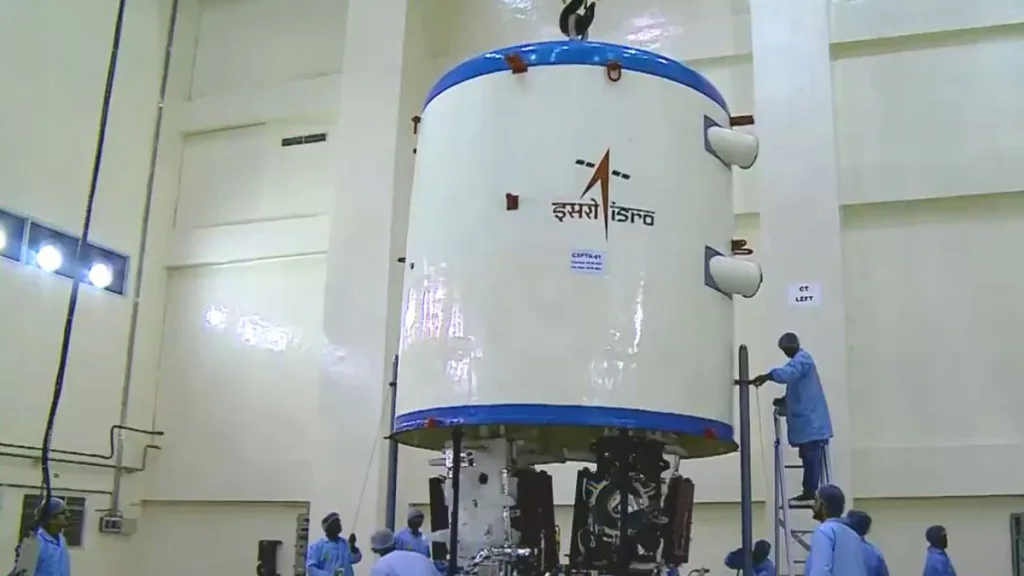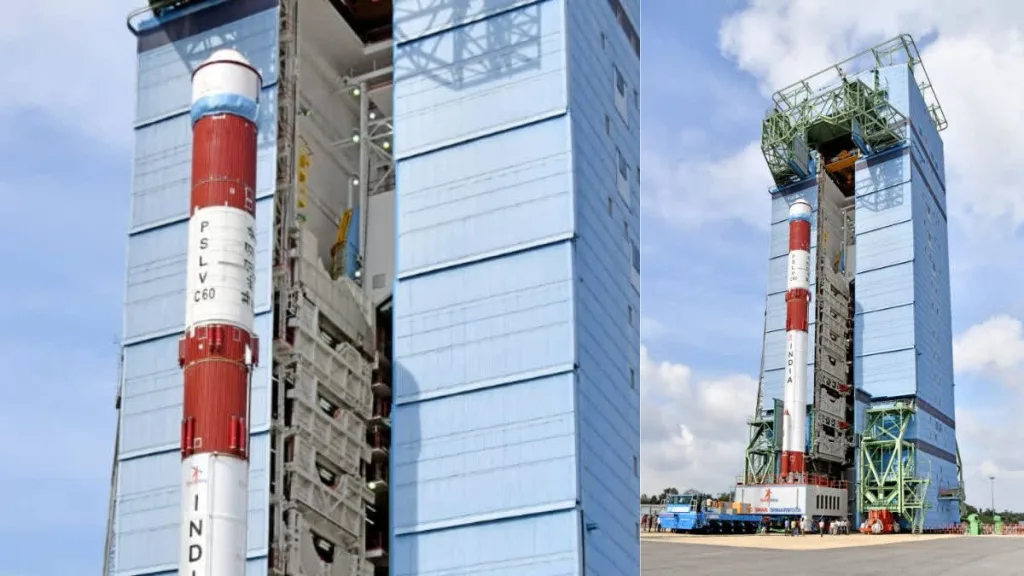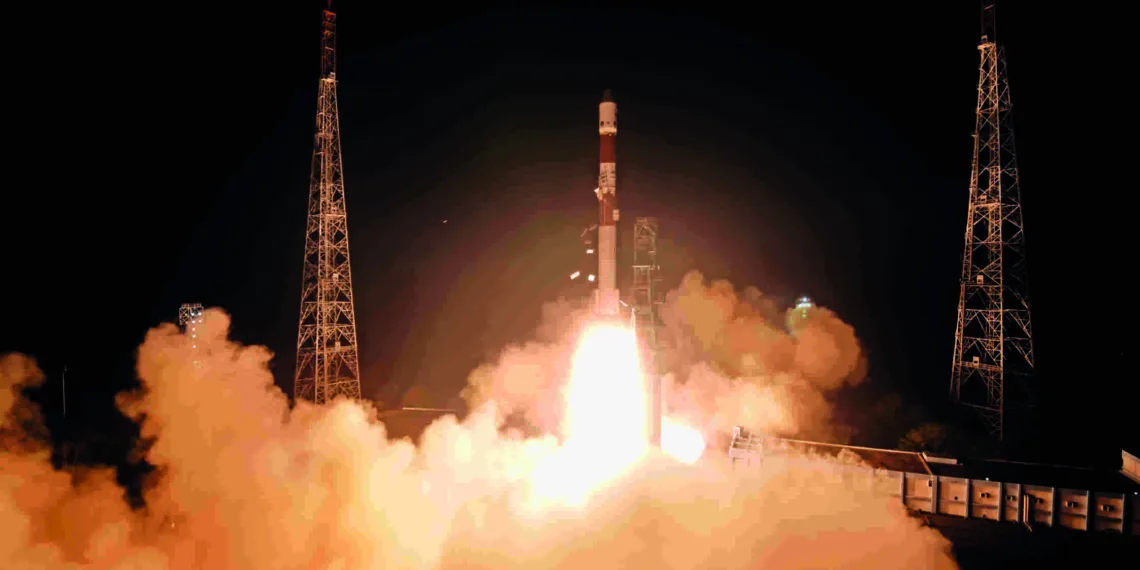The Indian Space Research Organisation (ISRO) has once again made headlines with the successful launch of its SpaDeX (Space Docking Experiment) mission. This groundbreaking mission, launched on December 30, 2024, from the Satish Dhawan Space Centre in Sriharikota, Andhra Pradesh, marks a significant milestone in India’s space exploration journey.
SpaDeX is not just another space mission; it is a bold step toward mastering the complex art of satellite docking in space, a feat achieved by only a handful of countries. With this mission, ISRO is setting the stage for ambitious future projects like Chandrayaan-4, Gaganyaan, and India’s first-ever space station, the Bharatiya Antriksh Station.
Table of Contents
What is the ISRO SpaDeX Mission?
The SpaDeX (Space Docking Experiment) mission is a pioneering project by ISRO aimed at demonstrating the ability to dock two satellites in space. Docking refers to the process of uniting two spacecraft in orbit, a highly complex and precise operation that requires advanced technology and meticulous planning.

Key Details of the Mission:
- Launch Vehicle: PSLV-C60 (Polar Satellite Launch Vehicle)
- Launch Date and Time: December 30, 2024, at 10 PM (rescheduled by two minutes)
- Payload: Two identical satellites, SDX01 and SDX02, weighing approximately 220 kilograms each
- Orbit Altitude: 470 kilometers above Earth
The mission uses an indigenous technology called the Bharatiya Docking System, showcasing India’s growing self-reliance in space technology.
Why is the SpaDeX Mission Significant?
The SpaDeX mission is a landmark achievement for several reasons:
1. Mastering Satellite Docking
Docking two satellites in space is an incredibly challenging task. The satellites, named SDX01 (Chaser) and SDX02 (Target), will be orbiting Earth at speeds of 28,800 km/hr. ISRO will carefully maneuver these satellites to reduce their relative velocity to just 0.036 km/hr before merging them into a single unit.
This precision docking, if successful, will place India among the elite group of nations capable of performing such advanced space operations.
2. Paving the Way for Future Missions
The success of SpaDeX will have far-reaching implications for India’s space program. It will serve as a technological foundation for:
- Chandrayaan-4: India’s next lunar exploration mission.
- Gaganyaan: India’s first human spaceflight mission.
- Bharatiya Antriksh Station: India’s planned space station, which will require docking capabilities for assembling modules and supporting crewed missions.
3. Advancing Space Exploration and Innovation
Union Minister Jitendra Singh highlighted the importance of SpaDeX, stating that it would solidify India’s position as a global leader in space exploration. The mission demonstrates ISRO’s ability to innovate and execute complex space operations, opening doors to more ambitious projects in the future.

How Does the SpaDeX Mission Work?
The SpaDeX mission involves deploying two identical satellites, SDX01 and SDX02, into orbit. These satellites are designated as:
- Chaser: The satellite that will actively maneuver to dock with the other.
- Target: The satellite that will remain stationary during the docking process.
The Docking Process:
- Precision Maneuvering:
The satellites will orbit Earth at a height of 470 kilometers, traveling at speeds of 28,800 km/hr. ISRO will carefully reduce their relative velocities to just 0.036 km/hr to ensure a safe and precise docking. - Docking:
Using the Bharatiya Docking System, the Chaser satellite will align itself with the Target satellite and dock to form a single unit. - Post-Docking Operations:
After docking, the mission will validate key objectives, including:
- Power Transfer: Ensuring seamless power transfer between the two docked satellites.
- Payload Operations: Testing the functionality of payloads after undocking.
- Lifespan:
The docked satellites are designed to operate for a lifespan of two years, during which they will conduct various experiments and validate technologies for future missions.

The Broader Implications of SpaDeX
The success of the SpaDeX mission will have a transformative impact on India’s space program:
- Space Station Development: Docking is a critical capability for assembling and maintaining a space station. SpaDeX will provide ISRO with the expertise needed for the Bharatiya Antriksh Station.
- International Collaborations: Mastering docking technology will make India a valuable partner for international space missions and collaborations.
- Commercial Opportunities: The technology developed for SpaDeX could be leveraged for commercial satellite servicing, such as refueling and repairs in orbit.
Conclusion
The ISRO SpaDeX mission is a monumental step forward for India’s space program. By attempting to dock two satellites in space, ISRO is not only showcasing its technological prowess but also laying the groundwork for ambitious future projects like Gaganyaan and the Bharatiya Antriksh Station.
This mission highlights India’s growing capabilities in space exploration and its commitment to innovation. As SpaDeX unfolds, it promises to inspire a new era of possibilities for ISRO and solidify India’s position as a global leader in space technology. With each successful mission, ISRO continues to push boundaries, proving that the sky is not the limit—it’s just the beginning.
Read More: ISRO Upcoming Missions: Gaganyaan Updates and Future Endeavors
FAQs
1. What is the significance of the ISRO SpaDeX mission?
The SpaDeX mission is significant because it demonstrates ISRO’s ability to dock two satellites in space, a complex operation mastered by only a few countries. This capability is essential for future missions like Gaganyaan, Chandrayaan-4, and India’s planned space station, the Bharatiya Antriksh Station. It also positions India as a global leader in space exploration and innovation.
2. How does the SpaDeX mission work?
The SpaDeX mission involves deploying two identical satellites, SDX01 (Chaser) and SDX02 (Target), into orbit. These satellites will orbit Earth at speeds of 28,800 km/hr. ISRO will carefully maneuver the Chaser satellite to dock with the Target satellite using the Bharatiya Docking System, reducing their relative velocity to just 0.036 km/hr. The docked satellites will operate as a single unit for two years, validating key technologies for future missions.








